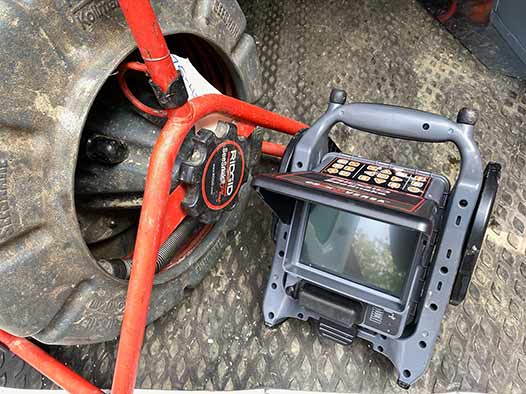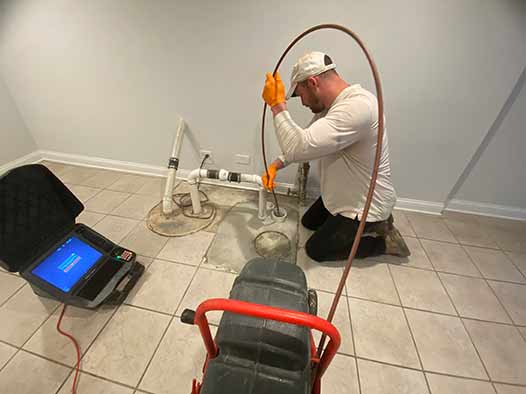
Slow drains can be frustrating and inconvenient, not to mention a potential sign of a larger underlying issue within your plumbing system. While clogged pipes are a common cause of slow drains, there are often hidden reasons that may not be easily detectable without the use of advanced technologies like sewer camera inspections. In this article, we will explore the importance of sewer camera inspections in identifying and resolving the hidden reasons behind slow drains.
The Need for Sewer Camera Inspections
Traditional methods of diagnosing plumbing issues involve guesswork, trial and error, and sometimes even invasive techniques like digging up pipes. However, thanks to technological advancements, plumbers now have access to sewer line camera inspections, which provide a non-invasive and accurate way to identify the root cause of slow drains.
Sewer camera inspections involve the use of a specialized camera attached to a flexible rod that is inserted into the plumbing system. This camera is equipped with high-resolution imaging capabilities, allowing plumbers to see real-time footage of the inside of your pipes. By visually inspecting the sewer pipes with a camera, plumbers can identify any blockages, damages, or other issues that may be causing slow drains.
Identifying Hidden Reasons Behind Slow Drains
Slow drains are often indicative of an underlying problem that may not be immediately visible. Here are some hidden reasons that sewer camera inspections can reveal:
1. Tree Root Intrusion: Tree roots have a natural tendency to seek out water sources, including the moisture inside your pipes. Over time, tree roots can penetrate and infiltrate your sewer lines, causing blockages and reducing the flow of water. Sewer camera inspections can accurately locate these root intrusions, allowing plumbers to take necessary action.
2. Pipe Damage: Cracked, broken, or collapsed pipes can impede water flow and lead to slow drains. The exact cause of pipe damage can be difficult to determine without visual inspection. Sewer camera inspections allow plumbers to identify any signs of pipe damage, such as corrosion, rust, or deterioration, and to recommend appropriate repairs or replacements.
3. Accumulated Debris: Over time, debris such as hair, soap scum, food particles, and other substances can build up inside your pipes, causing obstructions and restricting water flow. Sewer camera inspections can pinpoint the exact location and extent of debris accumulation, enabling plumbers to effectively remove the blockage and restore proper drainage.
4. Misaligned or Disconnected Pipes: Sometimes, pipes can shift or become disconnected due to various factors like ground settling, temperature changes, or poor installation. These misalignments or disconnections can disrupt the proper flow of wastewater, resulting in slow drains. Sewer line camera inspections allow plumbers to accurately diagnose the problem and take corrective measures to realign or reconnect the pipes.

The Benefits of Sewer Camera Inspections
Utilizing sewer camera inspections to identify the hidden reasons behind slow drains brings several benefits:
1. Accurate Diagnosis: Sewer camera inspections provide a visual record of the inside of your pipes, allowing plumbers to accurately diagnose the issue and develop an appropriate solution. This eliminates guesswork and minimizes the need for invasive methods of inspection.
2. Non-Invasive and Cost-Effective: Compared to traditional methods that may involve extensive digging or sewer pipe replacement, sewer camera inspections are non-invasive and cost-effective. They minimize disruption to your property while providing an efficient and accurate way to identify and resolve plumbing issues.
3. Preventive Maintenance: Sewer camera inspections not only help in resolving existing problems but also serve as an effective preventive maintenance tool. By identifying issues at an early stage, you can take timely action to prevent extensive damage, saving both time and money in the long run.
4. Documentation: Sewer camera inspections generate video footage and images of the pipe’s interior, providing visual evidence of the problem. This documentation can be useful for insurance claims, property inspections, or when buying or selling a property.
Conclusion
Slow drains can have hidden reasons that are often challenging to identify without the use of advanced technologies. Sewer camera inspections offer a non-invasive and accurate way to visually inspect the inside of pipes and uncover the root cause of slow drains. By utilizing this modern plumbing technique, homeowners and plumbers can effectively diagnose and resolve hidden issues, ensuring optimal drainage and preventing future plumbing complications.



Recent Comments